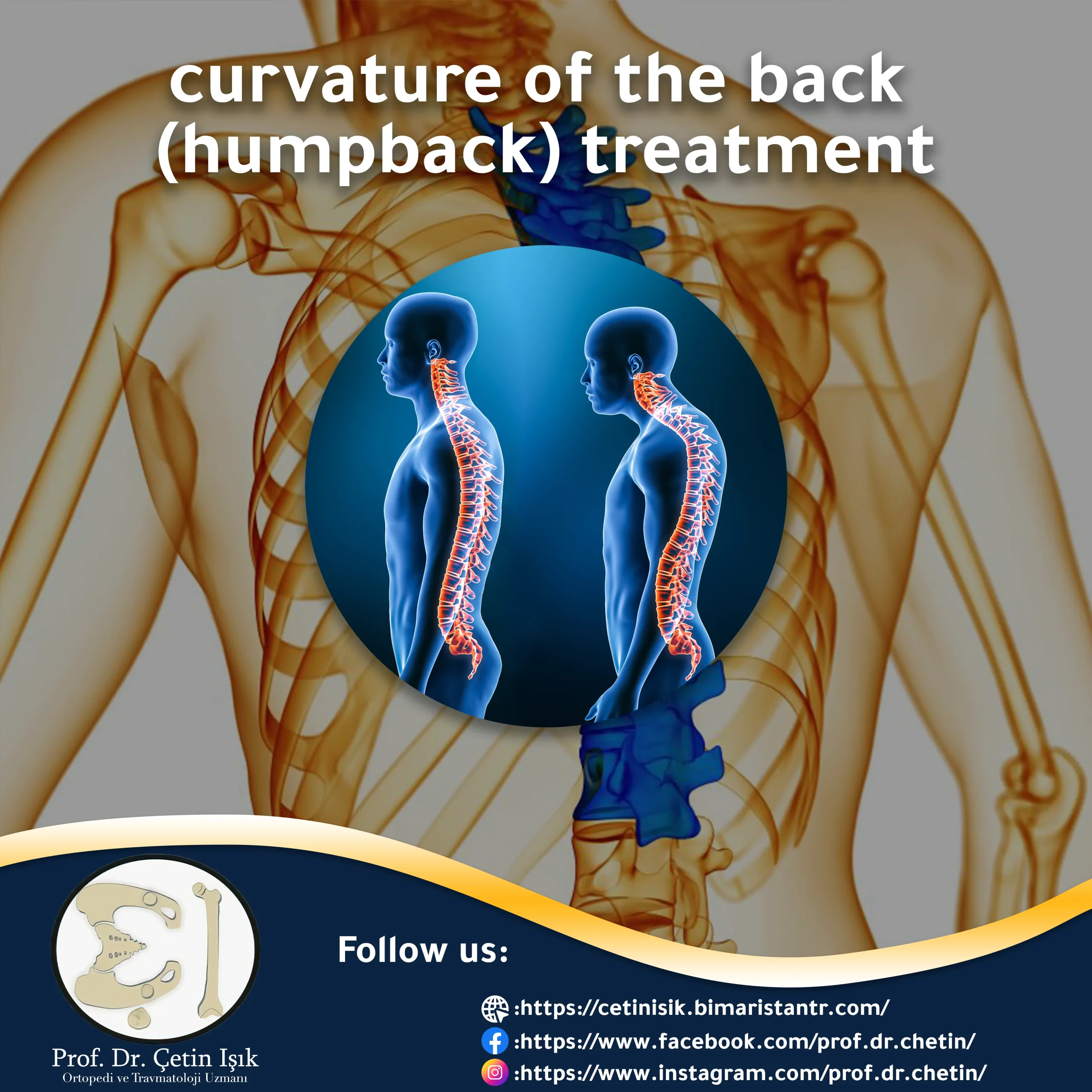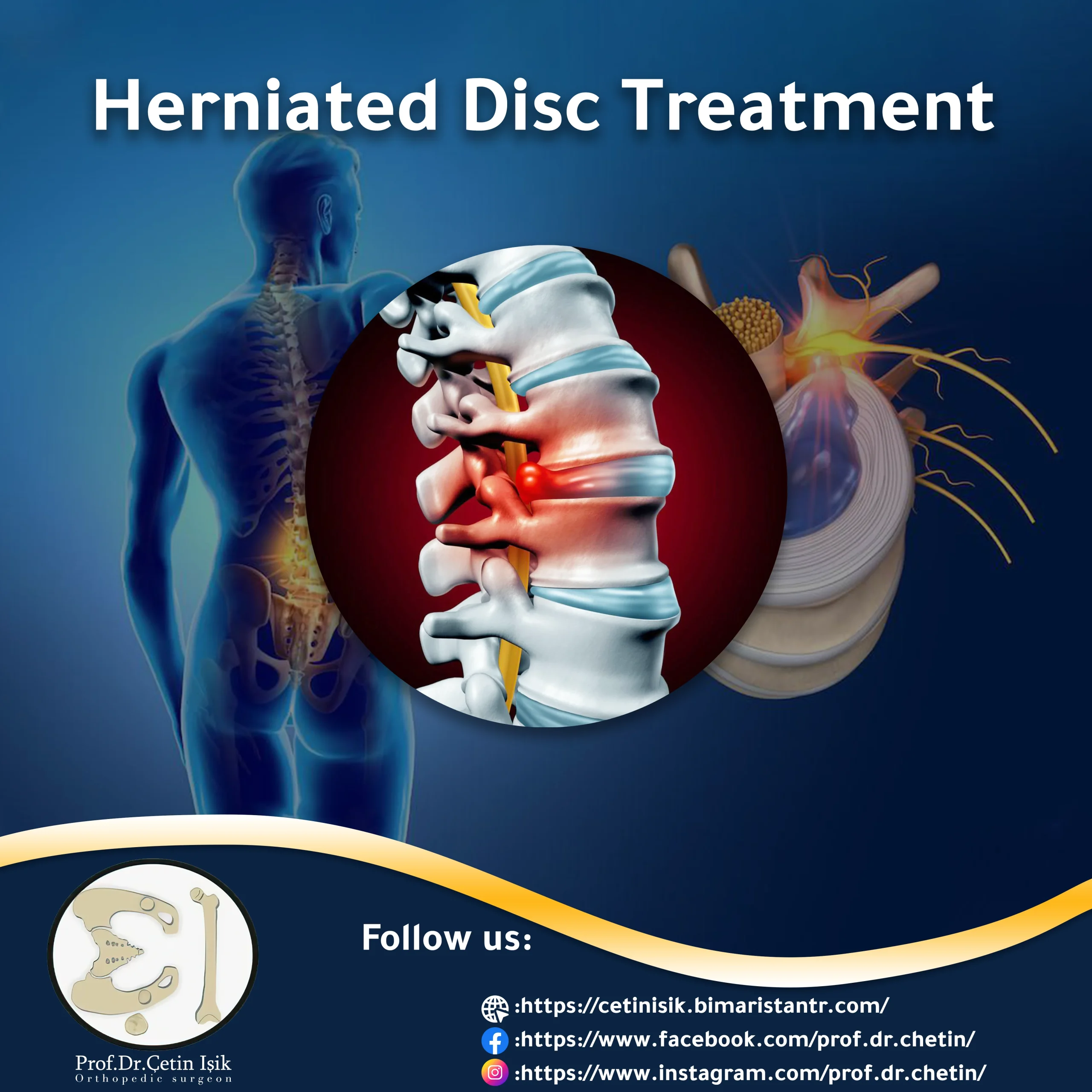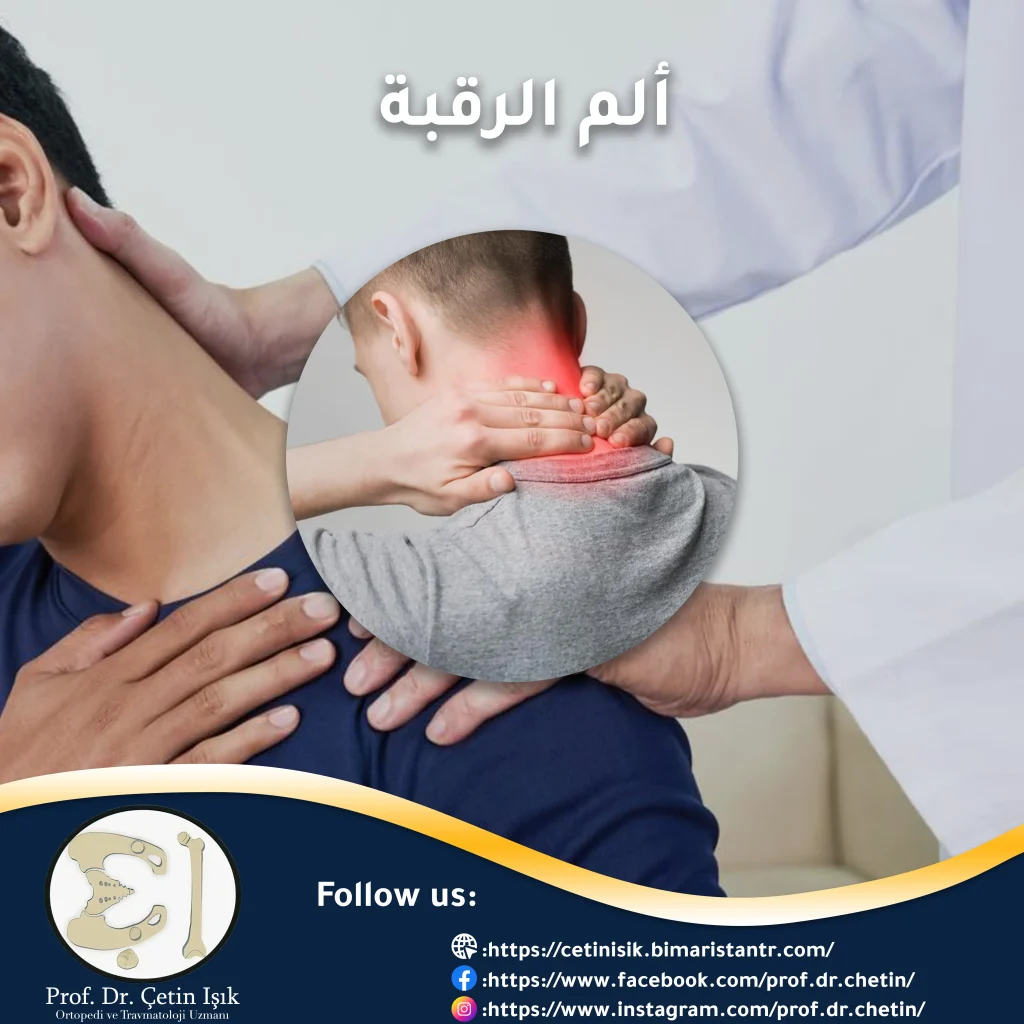Curvature of the back (kyphosis) is excessive curvature of the thoracic spine. Curvature treatment includes the use of back braces and physical therapy. Excessive curvature may require surgery.
What is curvature of the back (kyphosis)?
There are three sections of the spine: the cervical column, the thoracic column, and the lumbar column.
Each section has a natural curve, to help absorb shock, support the weight of the head, and help stand up straight.
Curvature of the back or kyphosis is defined as excessive curvature of the anterior axis of the thoracic spine. A small degree of forward curvature is normal, but it is more than 40 degrees. We call it hyperkyphosis. It results in a rounded shape in the upper back. It increases sideways curvature and causes curvature of the spine.
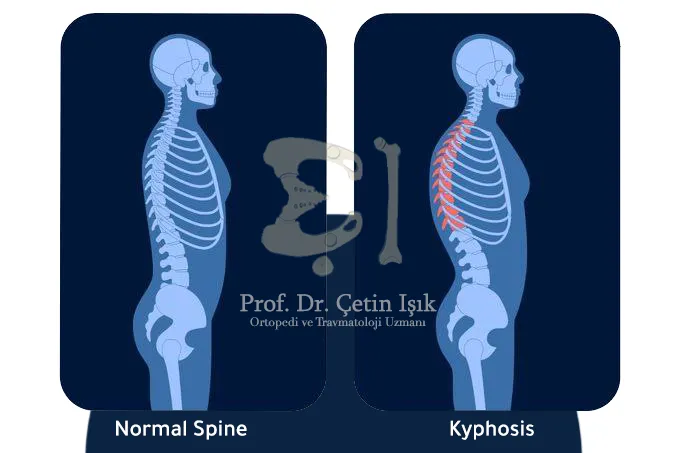
It must be differentiated from the term lordosis, which is the curvature of the spine in the lumbar region in the lower back and also in the upper back region inward.
Kyphosis can occur at any age, such as in adolescents whose bones grow rapidly. It is more common in females than males. Most sufferers are diagnosed between 12 and 17 years of age.
But it increases in the case of human aging, especially after the age of forty, so that the prevalence rate is about 20% in people aged 60 years and over, to different degrees.
Back curvature types
It is known to have three distinct forms of convexity:
Postural kyphosis: It is the most common in curvature of the back. It usually forms in adolescence as a result of the wrong posture and the tension it causes to the ligaments and muscles that hold the vertebrae in place, thus withdrawing from their basic position to give a circular convexity. It does not usually cause pain or health problems, but it is aesthetically effective, especially in the girls.
Scheuermann's disease: This type affects males during puberty more than females, because of the different shape of the vertebrae, so they appear wedge-shaped, and it can be painful during activity or when standing and sitting for a long time.
Congenital kyphosis: It is the rarest of the cases, it leads to a problem in the development of the spine, which worsens with the growth of the child, where the vertebrae fuse with each other instead of separating naturally, we often need to treat congenital back curvature surgically and early to prevent the curvature from worsening.
Causes of a curvature of the back
There are many common causes of curvature of the back, which is important because the underlying cause of curvature will largely determine the treatment options for curvature of the back, and the quality of physical therapy exercises involved.
The following disorders may increase the risk of developing a curvature of the back:
- Compression fractures: Injuries can be a major cause of kyphosis, if the fracture causes the vertebrae to collapse towards each other, which is the most common cause in adults as a result of Osteoporosis Ease of occurrence, especially in women.
- degenerative arthritis: This type develops due to the deformation of the spine due to its deterioration with age
- Ankylosing spondylitis: It usually affects adolescents at the beginning of puberty.
- Muscular dystrophy This genetic condition leads to muscle weakness, including the muscles of the spine.
- Spinal tumor: It can cause pressure, whether a benign or malignant tumor, and this affects the flexibility of the vertebrae.
Back curvature symptoms
The main symptom may be limited to the formation of the rounded hump in the upper back and the aesthetic aspect of the patient is affected, but in the case of severe back curvature, the patient may also suffer from the following symptoms:
- Pain and stiffness in the back and shoulder.
- extreme tiredness;
- Slight numbness and tingling in the legs, due to compression of the spinal nerves.
- Shortness of breath, due to the pressure of the spine on the airways.
- Balance problems and difficulty standing upright increases throughout the day.
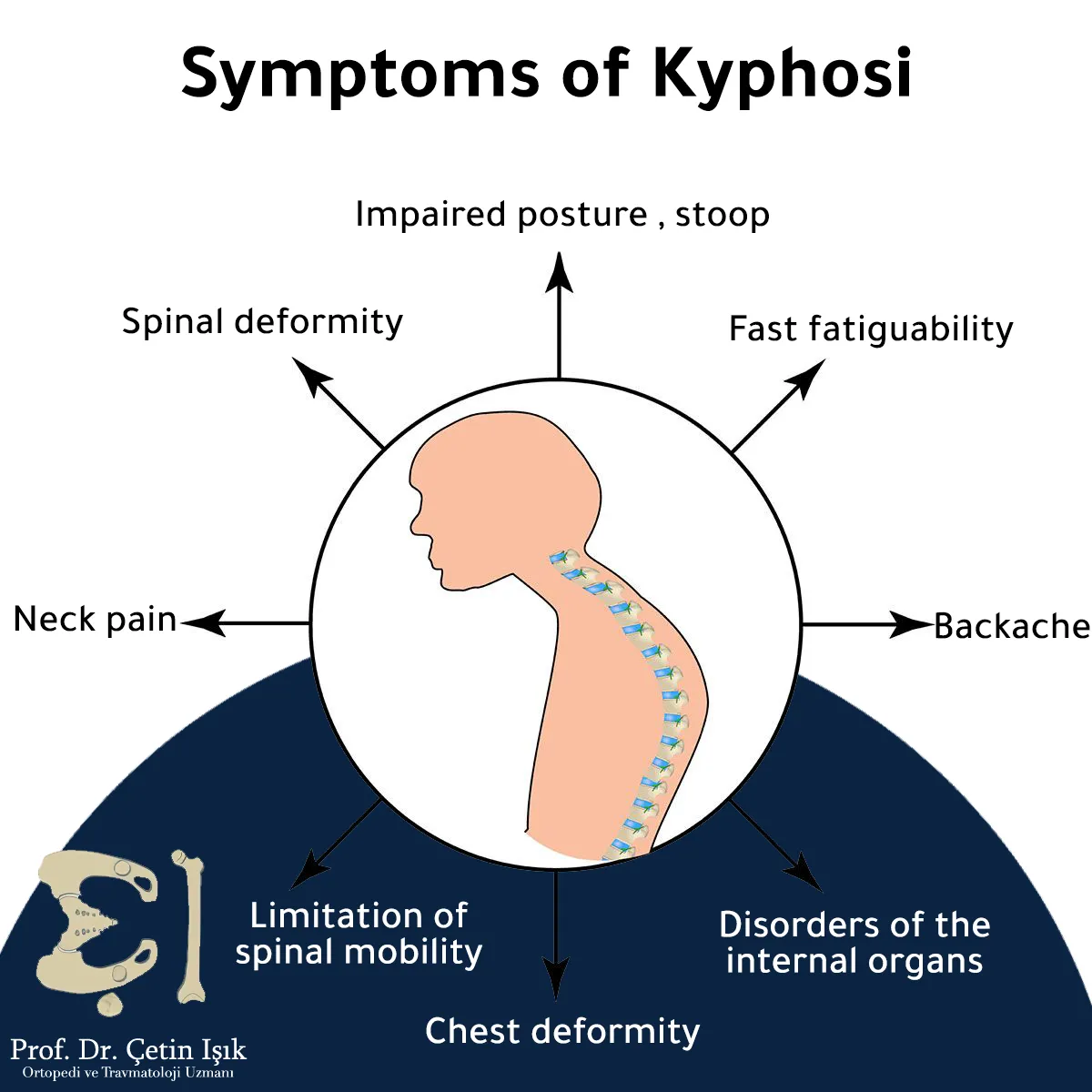
It produces some other less common symptoms, and when symptoms appear, the treatment of curvature of the back must be expedited.
Diagnosis of back curvature in Turkey
Your doctor diagnoses a bowed back by doing a physical exam and may order certain exercises to test balance and range of motion.
There is a common test in which the patient is asked to lie on a flat surface while the doctor examines the spine.
If the spine is straight, this indicates its flexibility and that the curvature is localized and not a structural problem.
But if it remains curved, it is possible that the structural convexity is one of the causes of the curvature
The doctor recommends an X-ray or MRI to look at the structure of the spine. In more severe cases, he will order other tests such as a blood test, lung function test or nerve tests to detect the presence of a compressed nerve and speed up the start of treatment.
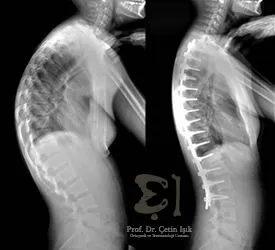
Curvature of the back (kyphosis) treatment in Turkey
How to treat depends on the type of kyphosis, the severity of the back curvature, the patient's age and medical history.
The course of treatment for curvature of the back generally begins conservatively, and treatment progresses to surgical intervention as a last resort if the patient's symptoms do not improve with conservative management or if the curvature of the column is very significant.
Doctors recommend conservative management of postural scoliosis or Scheuermann's kyphosis if the curvature is less than 75 degrees.
The most important methods of treating back curvature include::
Watching
In the case of a mild curvature of the back, the doctor may suggest waiting and watching just to see if the curvature develops or not, by following the patient periodically with X-rays.
If the condition remains stable and without accompanying symptoms, it is not necessary to treat the curvature.
Back curvature treatment physiotherapy
It includes exercises to treat back arches that help strengthen the back and trunk muscles. This will relieve pressure on the spine, and thus these exercises will improve the patient's back and reduce his discomfort.
It is also recommended to perform stretching and stretching exercises to treat back curvature, under the supervision of a specialized therapist, to prevent wrong movements and explain how to do the correct exercises.
Effective aerobic exercises that increase the health and activity of the heart and blood vessels also benefit from relieving back pain, fatigue, and symptoms of kyphosis.
Back curvature treatment with medication
NSAIDs help reduce any pain caused by a arched back.
It is also important to treat the underlying problem if any, such as Osteoporosis I take anti-bone resorption drugs to prevent fractures, but they do not treat curvature of the back by itself.
Back curvature treatment using belts and back support
For skeletally mature patients, wearing the belt will not contribute to the treatment or elimination of the curvature of the back itself, but it can benefit from pain relief and back support.
As for children and adolescents who have kyphosis above 50 degrees, the treatment of back curvature using a corset will direct the growth of the spine to straighten it, if the treatment is done before the bone maturity.
Surgical treatment of back curvature
We resort to surgery to treat back curvature in the following cases:
- Congenital kyphosis, a consequence of the progressive nature of the disease.
- The ineffectiveness of conservative treatment in relieving pain.
- Advanced curvature and back curvature of more than 75 degrees.
- Neurological problems, severe cardiopulmonary exacerbation and trunk deformity.
A surgical technique called: Spinal fusion To treat a curvature of the back (kyphosis), the operation involves bringing together the vertebrae responsible for the curvature of the back.
During the operation, the surgeon begins the treatment by making an incision in the patient's back and corrects the curvature of the spine using metal rods, screws and plates. The spine is fused into place using a bone graft taken from another part of the body such as the pelvis.
An orthopedic doctor may choose to perform the surgery from the front (anterior approach), posterior (posterior approach), or a combination of the two depending on the location and degree of the tuberous curve.
The operation takes 4 to 8 hours and is performed under general anesthesia. The patient usually needs to stay in the hospital for up to a week after the kyphosis surgery.
Balloon kyphoplasty:
It is a special surgery for kyphosis caused by fractures. It is a minimally invasive surgical method, with a shorter recovery time than the traditional operation and with similar effectiveness in the treatment of curvature of the spine.
If you encounter any problem about the details of back curvature treatment or have any questions, you can Contact us and doctor Çetin Işık will answer you for all your inquiries.
Back curvature prevention
It is possible to reduce the chances of developing a curvature of the spine, especially postural kyphosis, by maintaining the health of the back, muscles and proper posture, including:
- Regular exercise to support the back, strengthen the trunk and muscles, and maintain fitness and flexibility.
- Use chairs that support a healthy sitting position.
- Avoid tilting the neck forward when using or watching mobile phones.
- Ban alcohol and smoking.
- Ensure that the workspace is set up comfortably.
- Eat the natural need of calcium and vitamin D, to maintain strong bones and avoid brittleness.
Sources:
Common questions
Back curvature often does not cause a medical problem that requires treatment. In severe cases, it may cause pain and respiratory problems that require surgical treatment of the curvature to correct the spinal deformity.
It is an auxiliary method for treating curvature of the spine, as it relieves pain and pressure on the vertebrae by making the spine straight, and the corset may also help to avoid surgery later.
Yes, it depends on the degree of curvature, mild or severe, as well as the medical problems it causes.
Curvature of the back is normal, but excessive curvature or kyphosis affects the vertebrae, and this causes a decrease in the length of the spine and the consequent decrease in stature of the individual.


